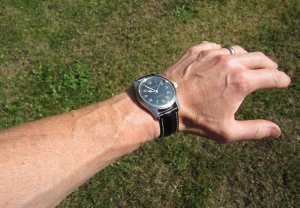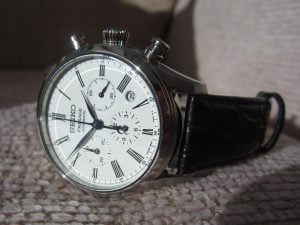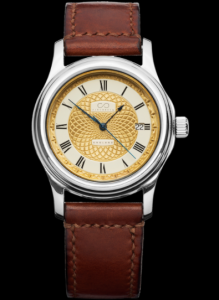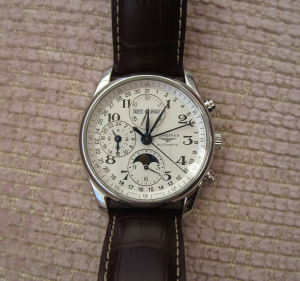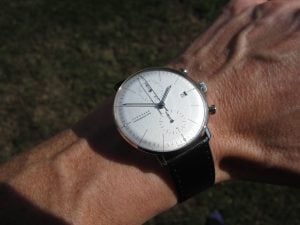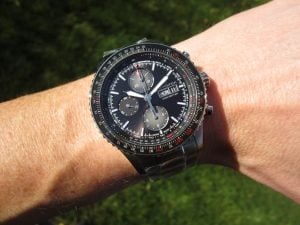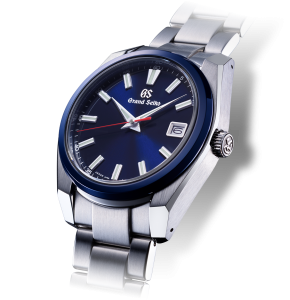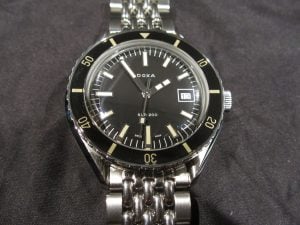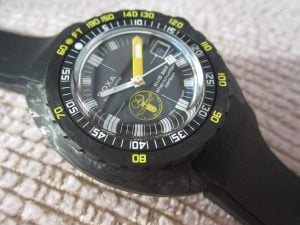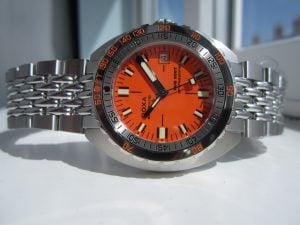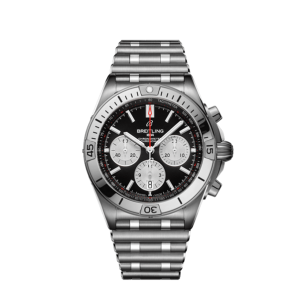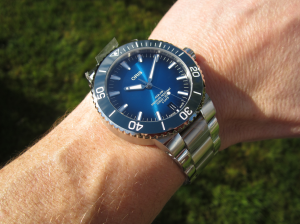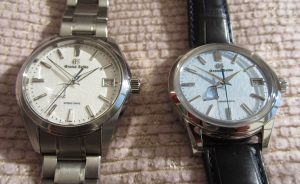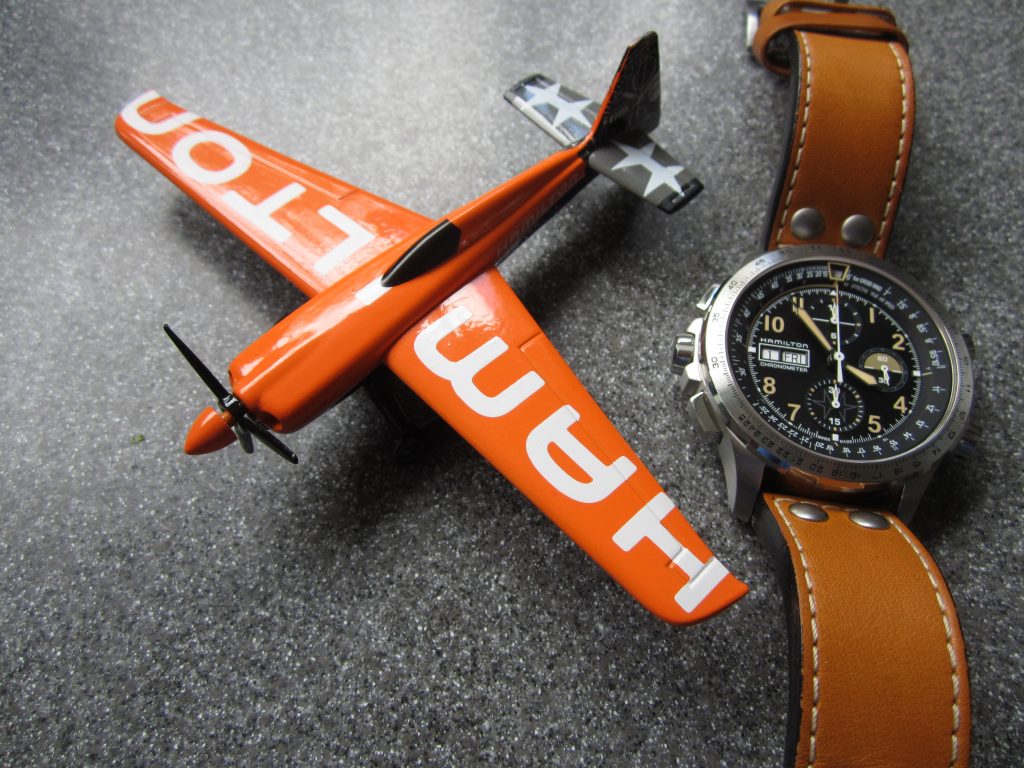
Introduction
Our story commences with the incredibly popular X-Wind chronograph, reference H77616533. There are some phenomenal watches on the market today. Some offer exceptional value for money, some offer the psychological assurance of coming from an historically revered brand, some offer impressive levels of robustness and reliability and some offer amazing functionality. The X-Wind encompassed all of these desirable traits when it was released to worldwide praise in 2005. All this and an additional exclusive complication. This unique element, the ability to calculate cross winds and flight trajectories, is the aspect of this stupendous timepiece that immediately impresses onlookers. However, beneath this distinctive attribute is a fantastic watch at an amazing price point. This Pilot’s tool watch, from industry stalwarts Hamilton, offered something truly unique for less than £1000. The price has, understandably, had a couple of index-linked increments in the past 15 years to what is now a still remarkable £1275. Even forgetting the crosswind calculator, I challenge you to find a day/date chronograph with a 60 hour power reserve pseudo in-house movement, that is produced and finished as well as the X-Wind, for anywhere near the money.

Image courtesy of hamiltonwatch.com
I was the happy owner of one of these extraordinary X-Winds until Hamilton released the Limited Edition 1918 chronometer rated version and I knew I had to own one of them.

Why a Limited Edition of 1918?
This anniversary edition of the X-Wind, reference H77796535, was released in 2018 to commemorate a centenary in the world of aviation. On May 15th, 1918 the first ever Airmail Service flight took place between Washington and New York. At the time the US had no commercial airlines, so the air postal service was performed by the Air Force. This was considered a major event. President Wilson placed one of the letters into the cargo himself. Hamilton were already supplying the US Military and Air Force. Therefore, the natural progression was for Hamilton to supply watches at the start of the US postal air service. The members of that original crew, Major Reuben Fleet and Lieutenant George Boyle, received a commemorative watch from Hamilton. The brand remained the official timekeeper for many years including the first, and subsequent, none-stop east to west postal service flights from New York to San Francisco in 1921. Since then many other aviation pioneers have been supported by the brand. A Hamilton watch accompanied the first pilot to reach the North Pole, Richard Byrd. Hamilton also became the official watch for the four major US Airlines in the 1930s.
At this juncture in proceedings I believe a ‘brief’ overview of the Crosswind Calculator is in order. You might want to go and make yourself a hot beverage.

A) Exterior Rotating Bezel
B) Crown for Upper Interior Rotating Bezel
C) Upper Interior Rotating Bezel
D) Crown for Lower Interior Rotating Bezel
E) Lower Interior Rotating Bezel
(Note: Crowns B and D are screw-down to facilitate 100m water resistance)
Position the arrow of the upper interior rotating bezel (C) to 12 O’clock with crown (B).
Adjust the lower interior rotating bezel (E) to 0° with crown (D).

Obtain the wind speed and direction from the control tower or a weather chart.
Example: Wind speed 40mph, direction 70°
Indicate the wind direction, 70, in the window with the upper rotating bezel (C) by adjusting crown (B).

Adjust the exterior rotating bezel (A) so that one tenth of the aircraft speed is indicated opposite the arrow. For this example, the speed is 180mph.

From the geographical bearing calculate the magnetic bearing of the aircraft. The variation (Var) depends on the current location, determined from an aviation chart.

For this example: Geographical bearing is 30°, variation is 10°, so magnetic bearing is 30° + 10° = 40°
Calculation the crosswind angle:
Example: the wind direction is 70° and the magnetic bearing of the aircraft is 40°. Therefore, the crosswind angle is 70° – 40° = 30°

Calculation of crosswind:
Using the nomograph on the back of the watch (or on the card supplied with the watch) determine the point of intersection of the wind speed (head/tailwind component) and the crosswind angle. Going from the point of intersection read the value of the crosswind componenton the horizontal axis.
Example: Headwind component is 40mph, crosswind angle is 30°, so the crosswind component is 20mph.
Calculate the angle of drift.
Locate the crosswind component (which we now know is 20) on the exterior rotating bezel (A) and read the value located on the interior rotating bezel (C). The angle is approximately 6.5°

Calculation of the corrected bearing.
If the wind is blowing from the right, add the angle of drift to the magnetic bearing.
If the wind is blowing from the left, subtract the angle of drift to the magnetic bearing.
For our example the corrected bearing is 40° + 6.5° = 46.5°.
To memorise this, rotate the lower interior rotating bezel using crown (D) to 46.5°

So, now you know. If it were me having to do that using the Hamilton we would have over shot into the next county before I’d worked it all out (“What do you mean this is Dumbarton and not Doncaster?”) However, it was great fun going through it on my X-Wind. And, I know you’ll have great fun too. You’ll do it purely as a self-indulgence, and then you’ll want to demonstrate to anyone showing even a vague interest.
The upper interior bezel could, hypothetically, be used as a timing bezel, in the compressor style. It has a convenient arrow for you to place next to your start time. For example, see below, if you required a start time of 12 minutes past the hour.

The movement has been rotated through 180° to allow the crowns to be positioned on the right side of the case. This allows easier access for pilots when performing those all-important crosswind calculations. You may think this would make the chronograph more meddlesome to operate, but it actually makes it easier. The finger that usually operates the stop/stop pusher is placed against the case in this regular 2 O’clock position. The thumb – a much stronger digit – which is normally placed against the case at the 8 O’clock position for chronograph operation falls conveniently into position to press the pusher.

Specification
Regardless of all my passionate flim-flam above, the two most important aspects of buying any luxury wristwatch is a) do I like the look of it? and b) do I like the feel of it? Both considerations are subjective, of course, but I’ve met few people who do not appreciate the visual aspects of the X-Wind 1918. And the watch sits perfectly on the wrist with nothing digging in to cause discomfort or long-term fatigue.

Almost every element of the original X-Wind has been enhanced, updated, redesigned or reworked for the Limited Edition 1918 example
Spot the difference (you’ve got one minute):
The strap, the wider hour/minute hands, the seconds hand, the tapered pushers, the caseback, the bracelets (highlighted below), the shape and finishing of the bezel, the lugs, the finer satin finishing throughout,the faux patina Superluminova, the subdials and the convex chapter ring are all different. The significant changes for me are the bezel, which is so much more superior now (with its highly polished chamfered edge), the faux patina, the sculptured chapter ring, the slightly conical crowns, and the packaging, which includes a die cast model of an Air Race plane. The Red Bull Air Race is an aeronautical slalom course completed by, what can only be called, airborne loonies. Hamilton Watches are the main sponsor and timekeeper of the championship. Nicolas Ivanoff, a multiple race winner, is a brand ambassador. He has worn various X-Wind models whilst racing his purpose built plane.

Wonderful presentation with a heavy die-cast model of an Edge 540 V2 race plane.

Image courtesy of hamiltonwatch.com
Observe the subtle, but effective, differences in the bezel, case and crowns.

Image courtesy of hamiltonwatch.com

Standard X-Wind: A nomograph is engraved into the semi-exhibition caseback to enable drift angle calculations for pilots.

Image courtesy of hamiltonwatch.com
1918 Limited Edition: The nomograph is placed on the rotor.

The H-21 movement in the standard X-wind automatic chronograph is based on the tried and tested Valjoux 7750 from stablemate ETA. Apart from Hamilton’s own visual alterations the movement has been upgraded to a useful 60 hours power reserve.

Image courtesy of hamiltonwatch.com
Despite the myriad aesthetic changes, mentioned above, between the standard and 1918 limited edition, it is the movement in the latter where a large portion of the separation occurs. This can be witnessed in full through the fully open exhibition caseback (See above). The H-21-Si movement is certified by the COSC as Chronometer rated. This has been made possible by employing a Silicon hairspring. This is the first ever Valjoux 7750 (the highest production Swiss automatic chronograph movement ever) to be enhanced with a silicon balance spring. Silicon is amagnetic, shock resistant, corrosion resistant and has a near zero temperature coefficient. This allows the movement to be regulated to within Chronometer limits by Hamilton before being passed onto the COSC with no variations in the accuracy. Long term accuracy can be expected.
Alternatives within the X-Wind family include:
X-Wind Auto Chrono. £1930. Reference H77736733 and £1695, Reference H77696793
Image courtesy of hamiltonwatch.com

X-Wind Day Date Auto. £1075. Reference H77785733
Image courtesy of hamiltonwatch.com
X-Wind Auto Chrono. £1830. Reference H77726351 and H77766331
Image courtesy of hamiltonwatch.com
Quartz Chronograph GMT. £925. Reference H77922341 and, £865, H77912535
Image courtesy of hamiltonwatch.com
Automatic Day Date. £965. Reference H77765541 and H77755533
Image courtesy of hamiltonwatch.com
Conclusion
The X-Wind epitomises the pilot’s watch in my opinion. It looks fit for purpose with its wealth of useful information that transpire into a well thought out tool watch. The only other mechanical pilot’s watch that comes close to this presentation of data is the Breitling Navitimer, with its own bi-rotational bezel calculator. Incidentally, the Navitimer on leather strap with in-house movement retails for £6130.
I do, of course, need to address the elephant in the room, because I know what you’re all thinking: “When will I ever need an analogue cross wind calculator on my watch?” It’s a fair point. But, buying any expensive watch is an indulgence to the point of seeming inappropriate. But we still do it. The most ubiquitous luxury tool watch is the diver. There will be a miniscule percentage of these timepieces, which are made expensive through technology and build quality that is required for deep sea diving, that even go anywhere near water. It’s an interesting fact – and one based in psychology – why we are drawn to timepieces that have the ability to perform in fanciful environments that we will never witness. Even the amateurs and professionals, for whom these wrist worn mechanically driven analogue tools were designed for, have superseded them with digital electronic versions.
By the way, I mentioned diver’s watches being expensive but again Hamilton bucks the trend with their professional rated Scuba Auto, starting at £645 and the trick Frogman Auto at just £995.
Examples of the Scuba Auto and Frogman Auto.
So, buy an X-Wind because you like the look of it and appreciate the technology and design. It sounds whimsical, but we all need to allow ourselves to be capricious at some points in our lives. The 1918 Limited Edition is a superb day/date automatic Chronometer rated chronograph with extended power reserve and silicon technology at an attractive price point, that just happens to have a crosswind calculator. Bonus.
The extra £1000 for the 1918 Limited Edition over the standard model is difficult to justify on immediate presentation. However, when you dig deeper into the specification and take a closer look at the fit, finish and design, all becomes evident. I believe this wealth of small details unite to elevate the incredible value X-Wind to the 1918 Limited Edition, which is, arguably, the best X-Wind Hamilton could have produced.

All words by Richard Atkins. All images by the author and Hamilton, unless otherwise stated. This article may not be reproduced in part or in whole without the permission of the author.
















